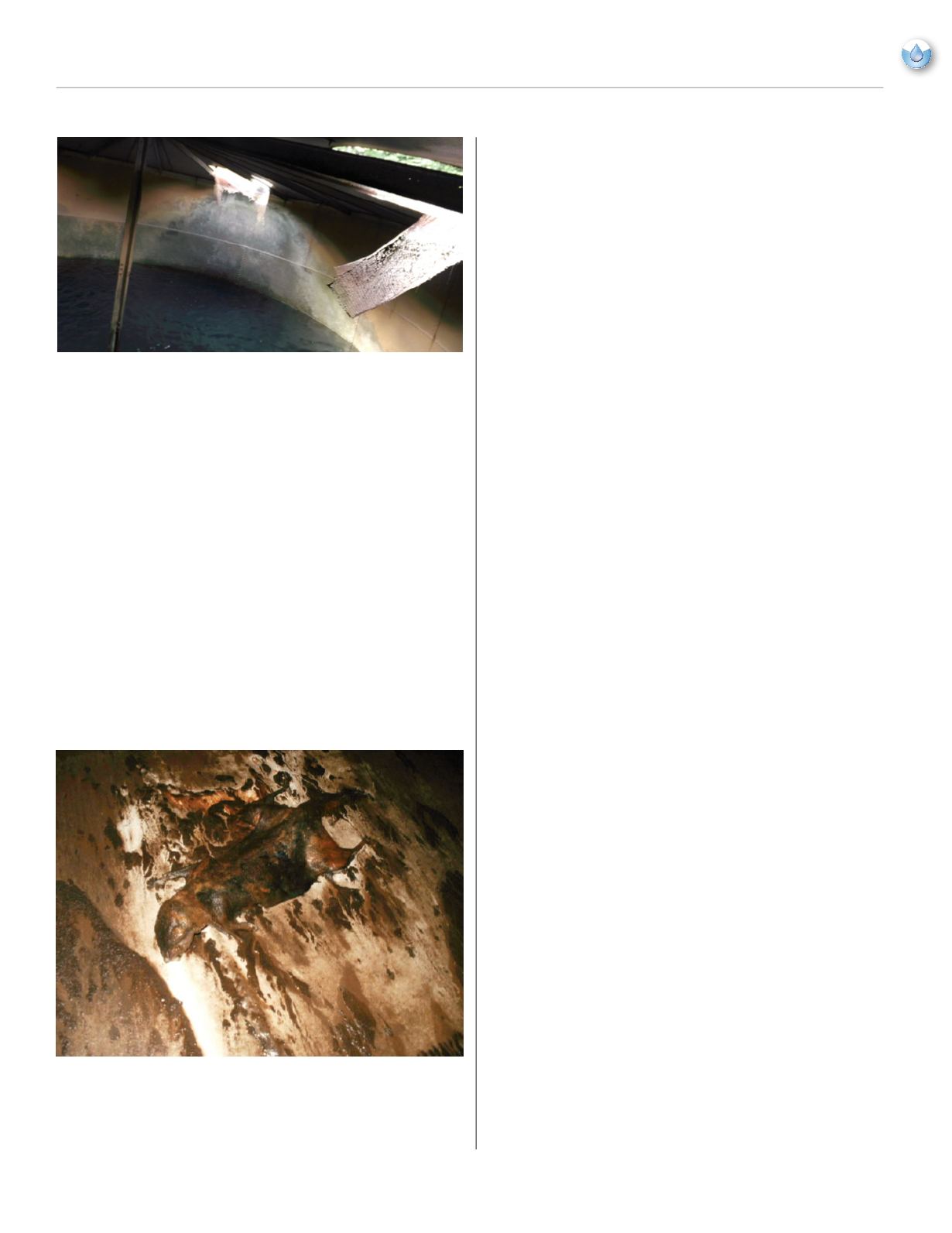
Winter 2014 |
NCRWA.COM
13
feature
the number one parasite in North America and the eggs can become
airborne, living for days without a host. Hookworm eggs can live
without a host for weeks, and Strongyloides Stercoralis can live with
or without a host. Baylisacaris and Dracunculus Insignis are found in
dogs, raccoons, minks, foxes, otters, skunks and other small animals of
North America.
[3]
Just last year, a decomposing raccoon was found in
a Virginia ground storage tank, and a dead squirrel was pulled from a
Missouri ground storage tank.
Ascaris worms are roundworms that cause respiratory problems, and
live worms may be observed in the stool or exiting through the nose
or mouth! According to Human Diseases and Conditions, “It has been
estimated that 4 million people in the United States carry ascaris, most
of them in rural southeastern areas.”
[4]
May 24, 2013, The Center for Disease Control and Prevention (CDC)
reported in their Morbidity and Mortality Weekly Report that, “During
April 2010 - March 2013 the Maine Department of Health and Human
Services investigated multiple cases of ascariasis that have been reported
by health-care providers, veterinarians and patients. After investigation, 14
persons on seven farms inMaine were identified withAscaris infection.”
[5]
Flatworms:
The Trematodes (flukes) are found worldwide, and their
common hosts are fish, snails, water plants and fish eating animals.
These potential hosts are found and removed from water tanks yearly!
Flukes are flatworms that live in the intestines, tissue, lungs or blood
depending on what kind has infected the body. The Fasciolopsis Buski
(intestinal fluke) infects the small intestines, and the Fasciola Hepatica
(liver fluke) infects the billary ducts and gall bladder. The Paragonimus
Westermani (lung fluke) is found in the lungs and is sometimes
mistaken for lung cancer. The Schistosoma (blood flukes) are found
in the blood and travel all over the body causing damage to red blood
cells and organs. People infected with blood flukes get sick, weak and
often die.
[6] [7]
Tapeworms:
The Cestodes (tapeworms) include: Taenia Solium (pork
tapeworm), Taenia Saginata (beef tapeworm), Diphyllobothrium
Latum (fish tapeworm), Hymenolpis Diminuta (rat tapeworm), and
Hymenolepis Nana (dwarf tapeworm). The pork tapeworm can cause
Neurocysticerosis (NCC), an infection of the brain or spinal cord.
According to theAmericanAcademy of Neurology, “Neurocysticercosis
is typically considered a disease of the developing world. Nonetheless,
NCC is also diagnosed in the developed world. The disease now is on
the rise in developed countries such as the United States, Canada and
the United Kingdom.”
[8]
January 15, 2013, a NewRX editor of Life Science Weekly reported
that, “Baylor University College of Medicine stated, ‘The rise in
the number of cases of NCC in developed countries, especially in
the Unites States of America, has largely been driven by influx of
immigrants from endemic to non-endemic regions and the widespread
access to neuroimaging. Cases of local transmission have also been
documented particularly in the setting of a tapeworm carrier present in
the household, with highlights the relevance of NCC as a public health
problem in the USA. We estimate that between 1,320 and 5,050 new
cases of NCC occur every year in the USA’.”
[9]
The beef tapeworm eggs can survive for months in the environment,
and the fish tapeworm eggs mature in the water within three weeks.
Tapeworms of wild animals can cause Alveolar Echniococcosis disease
that mimics liver cancer and cirrhosis of the liver. Rat tapeworms and
dwarf tapeworms are found in the feces of rats. Beetles and fleas eat the
feces and become the new host. Several years ago, twenty-four dead
rats were pulled from a Maryland water tank, and everyday insects and
beetles are found in tanks!
PREVENTION
1. Prevent the potential hosts from entering the tank by getting it
inspected for openings that could lead to unauthorized access.
Screens, free from rips or tears, should cover all pipe openings.


